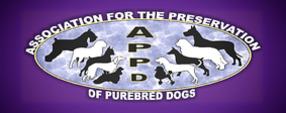
Physicians and surgeons request and receive access to all current knowledge and training in their field of medicine, they do not sway to public pressure as to what surgeries they perform or do not. Why should the Veterinary Medicine be any different?
Some people ask if docking, cropping and dewclaw removal is such a benefit to certain dog breeds then why are all breeds not given the same procedures. Not all breeds of dogs are the same, different breeds have different structures, and each breed is in its own category or group bred for a different purpose. Some breeds even though they would benefit from a good crop have ears that would never stand because the cartilage is not the same. Just like tails not all breeds’ tails are the same.
Nothing has changed the same Animal Husbandry practices used in history that promoted health and function also stand true for today otherwise why make exemptions?
Something that has changed for the breeds that fall under these guidelines is the health and welfare of future litters to come. By allowing only registered working dogs to be docked and/or cropped and dewclaw removed, breeding stock has declined for various breeds. As an example, United Kingdom Doberman registrations in 2005 had a very healthy Gene pool with 3316 registrations. Now in 2014 the Doberman after 7 long years of restrictions are down to 1104 registrations, this type of trend is being seen in all countries with a ban in place. Not only have the numbers of Dobermans dropped but the health and welfare of the breed is at risk as well. Same breeding stock is being used over and over again there will be little chance of eliminating or discouraging on sought of genetic or hereditary disorders to come.
(1) Dmitry_Konstantinovich_Belyaev - Belyaev’s fox experiment http://en.wikipedia.org/wiki/Dmitry_Konstantinovich_Belyaev…
(2) Paul Garson - Man’s Best Friend on the WWII Battlefield http://writingdisorder.com/paul-garson/
(3) http://en.wikipedia.org/wiki/Docking_%28dog%29
(4) http://www.bva-awf.org.uk/…/…/user/tail_docking_guidance.pdf
The proof is in the exemptions, the injustice is in the restrictions!
Photo credits: Tucker creek Aussies, Mrs L. Long, Barn Hunt Association, Jo Ann P. Hammond, , Gun dogs UK, Chicago times, Working Rescues, Protection Dog Sales, Furever Network.
People often say that dogs just are not used the way they were back in the OLD DAYS. This is another myth, with 40% of our world's land being used for farming and livestock it is the biggest trade around the world. Animals are not only used to control vermin and protect livestock they are also used in herding in areas where vehicles can just not go. Home break-ins or personal assaults have increased, dogs may no longer be used in the Military or Police by the hundreds as they were 60 years ago, more of personal protection or companion than anything. Still the benefits of docking dewclaw removal would not change only the lifestyle of the dog. Besides dogs don't have to be working all day out in the range to suffer injuries or infection it can also happen within the confinements of a crate or in your own home.
Tail docking, ear cropping and dewclaw removal in pets.
I am sure that most people are aware that dogs descended from wolves, millennia ago. What a lot of people may not realize is most dog breeds in North America originated in the British Isles and were imported to this continent over the last few hundred years. (1) Most breeds were created for a purpose, mostly as a helpmate with herding, retrieving, hunting, protection and vermin control. They were further refined for herding of specific animals, retrieving or hunting on water or land and so on. It was found that during the course of the duties required of these dogs, ears, tails and dewclaws were often badly damaged or totally torn off, often resulting in serious injury or in the death of the animal. A well trained, purpose bred dog was very expensive and was often the only dog a farmer or hunter was able to afford. Therefore, it became a necessity to dock the tail and crop the ears to prevent injuries to the dog and often save its life.
In the 1700’s tail docking was believed to prevent rabies, strengthen the back, and increase the animals overall function and promote fewer injuries and infections. Strangely enough dogs with docked tails were exempt from taxes as most were working breeds. The United Kingdom revoked the tax exemption in 1796, but the docking of certain breeds still continued, proving it was more than just saving money, but actually was necessary for maintaining healthy dogs.
By 1937 the cropping of dogs ears was not only saving the lives of dogs in preventing infections and injuries, but the lives of their handlers as well. Out of thirty dog breeds tested for the US Marines, two were chosen to be Dogs of War, the Doberman (cropped) and the German shepherd, both having upright ears, which promoted acute hearing skills, ability to CLOSE-OFF their INNER EAR and micro-focus on a particular sound. "(2)
Here we are in the year 2000 and all across the world you still see these Animal Husbandry practices such as docking, cropping and dewclaw removal, being performed today, despite the constant pressure from Animal Rights Activists. (3) Most people believe that the United Kingdom has a total ban on docking, cropping and dewclaw removal, this is just not true. In actuality, these procedures are still permitted only restricted, in that they only are done by a vet, on a few selected dogs that are chosen to be working dogs.(4)